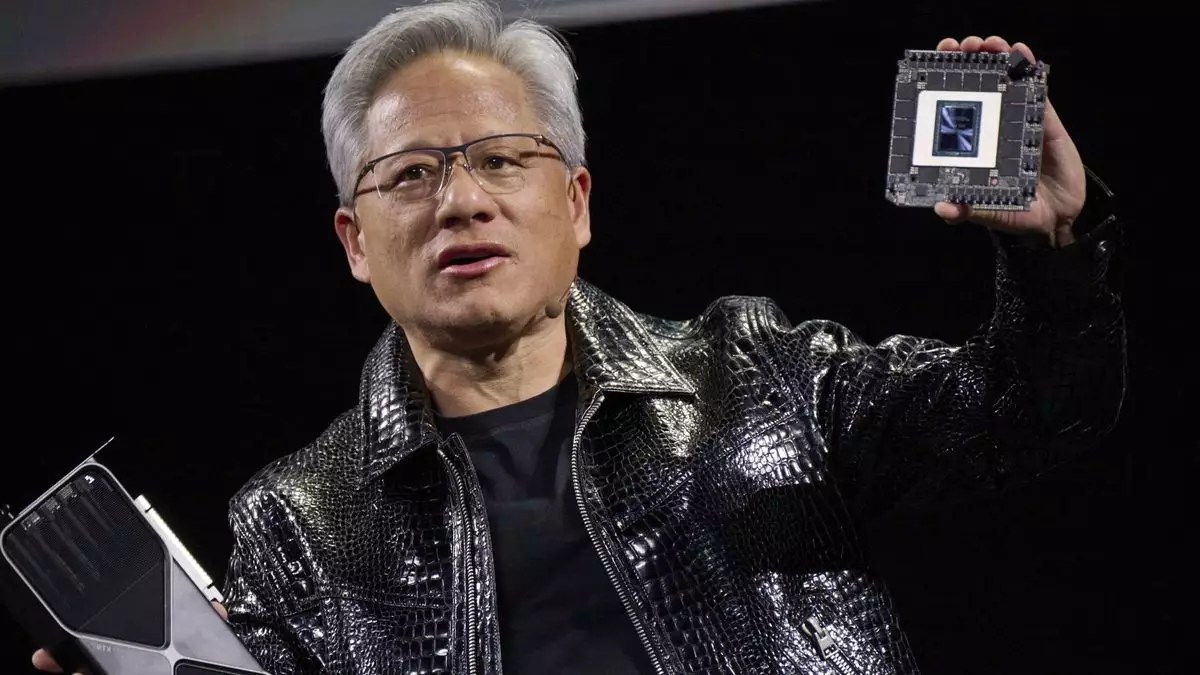Nvidia, synonymous with cutting-edge graphics technology, is navigating a transformative path that reflects not only innovation but also strategic financial acumen. The world of gaming is undergoing a significant evolution due to advancements in artificial intelligence, particularly with the introduction of Nvidia’s DLSS (Deep Learning Super Sampling) and frame generation technology. These developments have ushered in a new era where performance seems to be dictated more by software advancements than by traditional hardware improvements, raising questions about the long-term implications for both game developers and consumers.
In a riveting disclosure found in the book, *The Nvidia Way: Jensen Huang and the Making of a Tech Giant* by Tae Kim, it is unveiled that behind the shimmering veil of Nvidia’s current success lays a six-year endeavor to perfect the AI model for its frame generation technology. This innovative feature is designed to enhance gameplay experiences by generating intermediary frames between the ones rendered by conventional GPUs. The head of this endeavor, Bryan Catanzaro, articulated the challenges and triumphs faced during the development process, emphasizing that the freedom to focus extensively on a singular project is often a luxury in the academic world.
This prolonged period of research and development indicates a profound commitment to refining artificial intelligence capabilities before such technologies are unveiled to the gaming community. Catanzaro’s description of the journey as one of gradual quality enhancement is critical; it reveals not just the technical difficulties but also the iterative nature of creating fundamental changes in how graphics are processed in video games.
Nvidia’s striking balance between hardware innovation and software-driven solutions paints a broader picture of its strategic direction. While the company has made substantial investments in its GPU line-up, it simultaneously looks towards AI technologies that could potentially offer exponentially greater returns. The rapid advancements in DLSS and frame generation allow Nvidia to enhance performance without needing to retool their entire hardware manufacturing process.
This creates a scenario where Nvidia can leverage algorithmic enhancements across a range of existing products, thereby minimizing the cost related to traditional hardware development. In essence, this model minimizes risk while maximizing profit margins, and it aligns perfectly with the growing demand for performance without the necessary dependency on more complex and costly hardware enhancements.
However, for gamers, the implications of these business strategies present a paradox. While technologies like DLSS and frame generation offer significant performance benefits, they often arrive at a cost; that cost being a stagnation in conventional GPU performance metrics. Observers have noted that Nvidia’s latest RTX 50 series does not exhibit substantial improvements in rasterization performance, which has historically been a focal point for gamers. Instead, the emphasis on AI-driven performance boosts may overshadow the core advancements that enthusiasts yearn for—namely, raw graphical capabilities.
This reliance on software enhancements rather than tangible hardware improvements can create a rift in consumer satisfaction. Gamers may find themselves torn between appreciating the technological innovation that AI brings and feeling disenfranchised when it comes to the pace of traditional graphical advancements. It is an essential balancing act—Nvidia must juggle the expectations of its core audience while pursuing profitability through innovative means.
Looking forward, the ongoing evolution of AI-enhanced gaming technology exemplifies the shifting landscape of the industry. Nvidia’s continued focus on artificial intelligence presents possibilities for increased performance and more immersive gaming experiences. However, it also raises the critical question of sustainability: as gaming continues to demand higher performance standards, will the reliance on algorithmic enhancements sufficiently meet consumer needs without sacrificing the core attributes that have defined gaming graphics?
As Nvidia boldly forges ahead, the interplay between AI technology and traditional hardware development will likely shape not just the company’s future, but the experience of gamers worldwide. Striking the right balance will be vital, lest the industry finds itself at a crossroads where performance does not fully align with consumer expectations. The trajectory Nvidia is currently navigating will be crucial for determining the future of graphics technology in gaming, ensuring that innovation continues while also honoring the foundational elements that define the gaming experience.


Leave a Reply